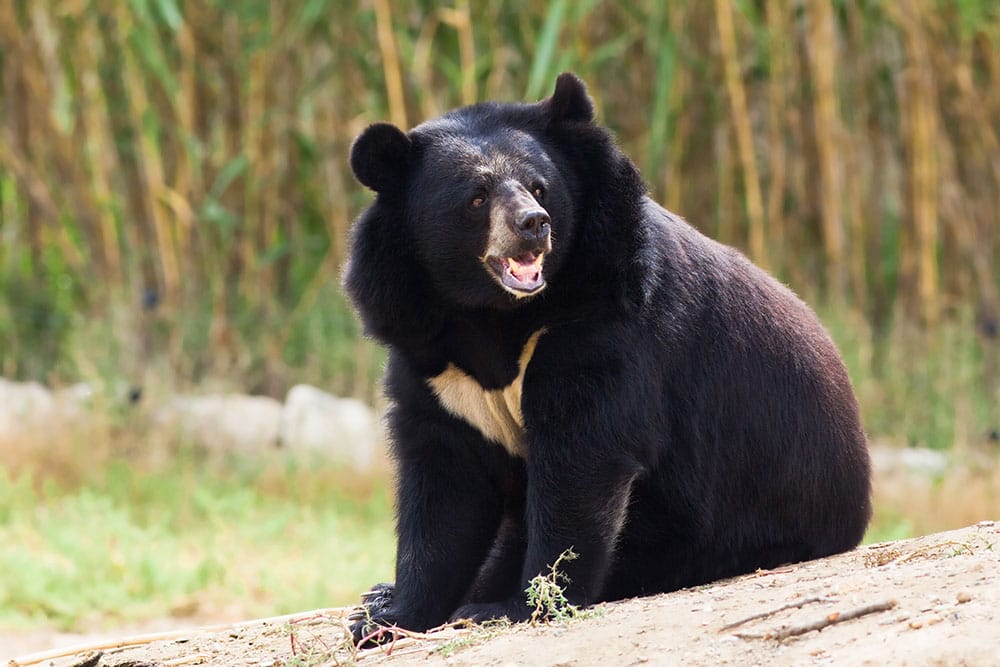
From 2007 to the present (2023), there have been more fatal bear attacks in Japan than in the United States. It is possible there have been more total bear attacks in Japan than in the United States, but records of total attacks are not as clear. Through the end of October of 2023, there were 180 bear attacks where a person was injured in Japan. From JapanNews:
Tokyo, Nov. 1 (Jiji Press)—The number of people attacked by bears in Japan between April and October totaled 180, already a record high on a fiscal year basis since the statistics started in fiscal 2006, the Environment Ministry said in a preliminary report Wednesday.
The previous record high was 158 marked in fiscal 2020.
The ministry is calling for maximum vigilance until the bears go into hibernation, due to the poor acorn crop mainly in the Tohoku northeastern Japan region.
Five people have been killed in attacks by bears so far in fiscal 2023, which started in April.
While there is no central registry of all bear attacks in the United States, fatal bear attacks are well-recorded in the media. Different websites keep track of fatal bear attacks in North America. The location of each attack is noted. The number of fatal bear attacks in the United States can be determined.
The number of fatal bear attacks in the United States for 2023, as of November 14th, was four. Two people were killed by a polar bear, one person was killed by a black bear, and one person was killed by a brown bear. The number of fatalities in 2023 was one more for Japan than the United States. One year does not tell the story. Reports online show Japanese fatal bear attacks from 2007. Japan started keeping records in 2006. The total number of fatal bear attacks in 2007 – 2023 in Japan is 37 or 38. Two of those are from bears that were captured. From May of 2018 eenews.net:
At least 522 people were attacked by bears from 2012 to 2017, with a dozen fatalities, according to Japan’s Ministry of the Environment. Over the past decade, the ministry said, there have been 880 bear attacks and 24 human fatalities.
One fatality in Japan, discovered in 2018, appeared to be a fatal bear attack. While likely, the investigation was not complete when the article was written. No fatal attacks were recorded in Japan in 2019. Thirteen fatal attacks were recorded in 2020-2023.
Over the 16-year period from 2007 – 2023, inclusive, there were 37 or 38 people killed by bears in Japan, depending on the results of the investigation of the body discovered in June of 2018. The total number of fatal bear attacks in the United States from 2007 – 2023 is 33, three of which were from captured bears.
The result is astounding, considering the populations of bears and people and the land area of the two countries.
Japan’s human population is about 125 million and shrinking. The United States human population is about 331 million and rising. Japan has an estimated 45,000 Asian black bears (some estimates are as low as 15,000). The United States has a North American black bear population of 339,000 to 465,000, or about ten times as many as Japan. Asian and American black bears are distinct species but closely related.
Japan has a brown bear population of about 12,000 on the northern Island of Hokkaido. The United States has a brown/grizzly bear population of about 35,000, with over 30,000 of them in Alaska. All the brown/grizzly bears are closely related, with minor differences. They are generally considered one species with subspecies. The United States has about three times the number of brown bears that exist in Japan.
The United States has a couple of thousand polar bears. Japan has no wild population of polar bears. The area of Japan is slightly less than the area of the State of Montana, about 146,000 square miles. The area of the United States is about 3,806,000 square miles or about 26 times the area of Japan. Over half of Japan is heavily forested mountains.
Bear populations in Japan and the United States have risen in the last few decades. Human populations in Japan have started to fall. Human populations in the United States continue to rise.
Bear attacks have dramatically increased during the last five decades as increased protections for bears were introduced in the middle 1970s for the USA and the 1990s for Japan.
In Japan, the increase in bear attacks has been attributed to decreased human populations. In the United States, the increase in bear attacks has been attributed to increased human populations.
An obvious difference between Japan and the United States is Japan has one of the lowest number of privately owned firearms per capita in the world, while the United States has the highest number of privately owned firearms per capita in the world. In the United States, problem bears are likely to be killed early in their career.
About Dean Weingarten:
Dean Weingarten has been a peace officer, a military officer, was on the University of Wisconsin Pistol Team for four years, and was first certified to teach firearms safety in 1973. He taught the Arizona concealed carry course for fifteen years until the goal of Constitutional Carry was attained. He has degrees in meteorology and mining engineering, and retired from the Department of Defense after a 30 year career in Army Research, Development, Testing, and Evaluation.







Thanks Dean, I really appreciate your work. This article is probably one of the most interesting in your series. It is sort of a head scratcher and makes very clear big differences between Americans and the Japanese cultures. If we had those fatality numbers there would be a deafening siren song from every “Karen” in America, especially up here in the western portion of the Soviet of Washington where our rapidly increasing Black Bear population does not hibernate and are scavenging for food year round. In my little burg, there’s not a day that goes by where a Bear is… Read more »
Lol, I was waiting for the punchline, and I found it in the last paragraph. Nice job Dean. It’s nice to know that in America, people rule not the bears or the Marxist liberal demonkkkrats. We just need to shake them up and point out the constitution to them more often because they only know what they are being taught in schools which is twisted lies of a made-up history and not the truth. America is here today and is what it is because we didn’t have gun control like the left wants, we had our own form of gun… Read more »
Warning shots can work if one has the time and ammo capacity.
Finding out about them tends to be hard.
The author has documented several.
I am sure he would gladly hear about more.
What, did they take the swords away from the Japanese citizens ?
Of course, knowing of Dean’s research on defense from bears via handgun, the conclusion wasn’t surprising. I am curious what the area density of bears in Japan vs US is. Does Japan have more bears per square mile? That seems like it would be a strong factor. I suspect that differentiating the effects of those two factors would require some serious statistical analysis. Maybe doing a regression looking at attacks per state/prefect vs bears per square mile in each state/prefect. It would take a lot of work even if that data is available.
I’ve followed this series with interest for some time. One minor suggestion I would like to add, which may or may not necessarily be relevant to bear safety, is that Japan is also slightly smaller than California (155k square miles if memory serves) and more usefully, they are geographically mirror images on a map – you can ‘flip’ them over and both have the same general profile. Also, populations and population distribution are somewhat more comparable as well as the majority of both populations are concentrated in urban coastal densities with relatively soarsely populated interiors.And both are also fanatically hostile… Read more »